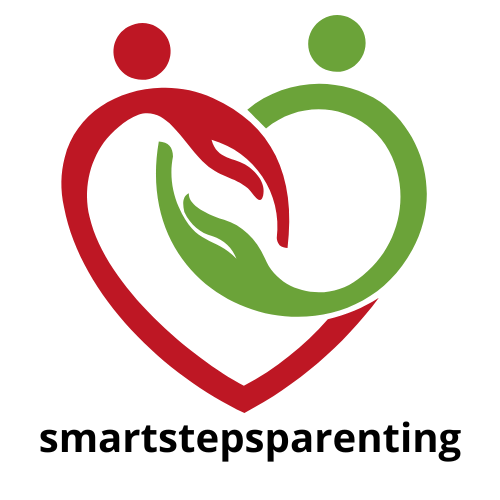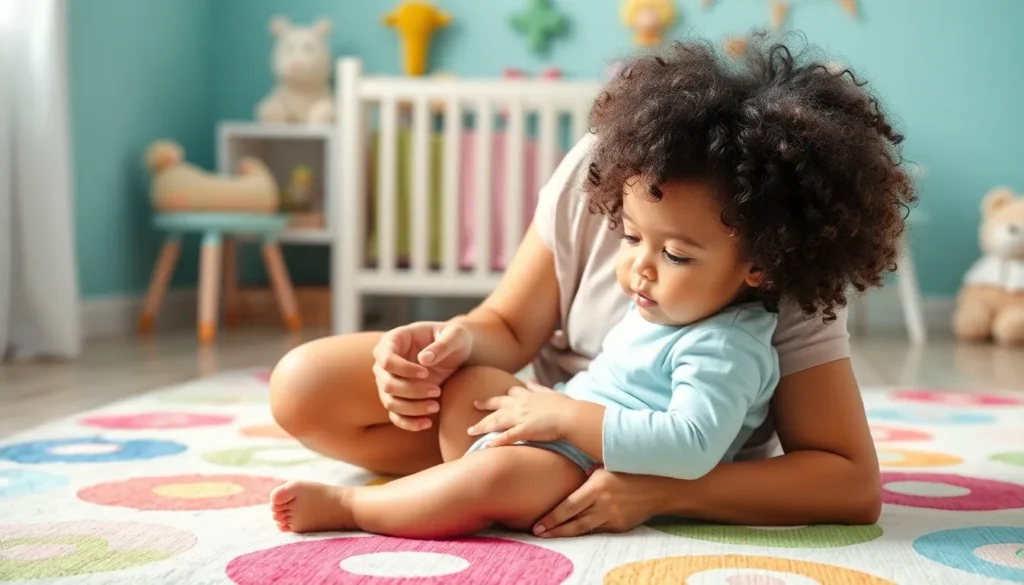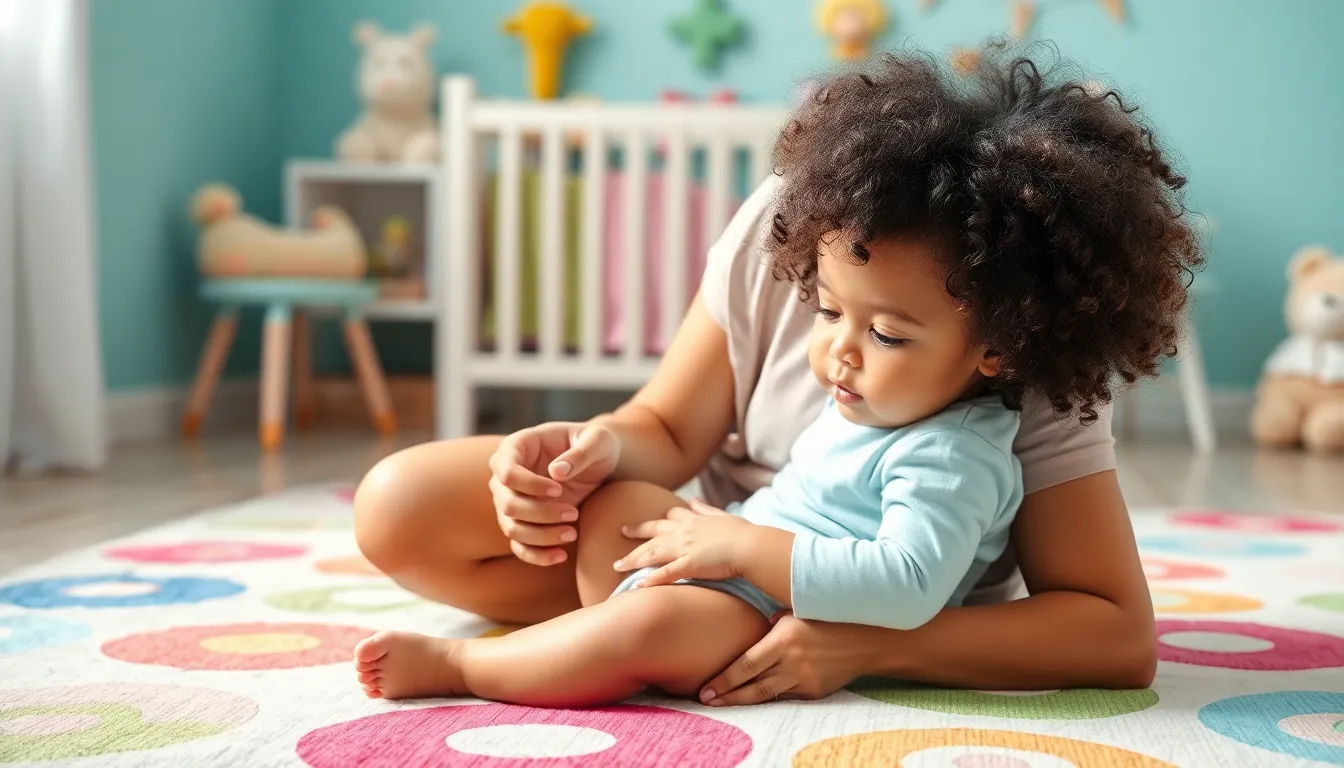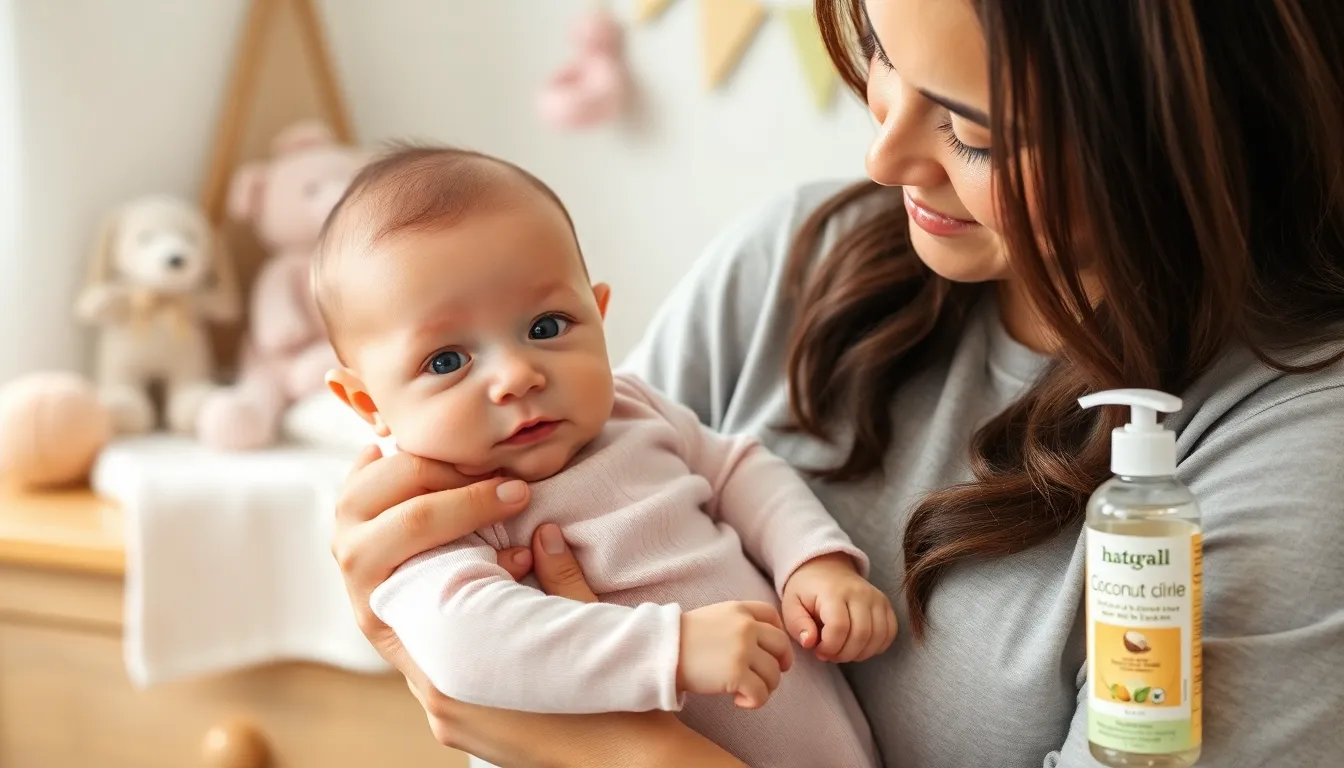Diaper rash can be a frustrating experience for both babies and parents. This common skin irritation often occurs due to prolonged exposure to moisture, friction, or irritants in diapers. Understanding how to effectively treat and prevent diaper rash is essential for keeping little ones comfortable and happy.
Fortunately, a variety of remedies can soothe irritated skin and promote healing. From natural solutions to over-the-counter creams, parents have numerous options at their disposal. This article explores effective diaper rash remedies, helping caregivers find the best ways to protect their baby’s delicate skin and ensure a peaceful diapering experience.
Table of Contents
ToggleOverview Of Diaper Rash
Diaper rash is a prevalent skin irritation that commonly affects infants. It results from factors like moisture, friction, and exposure to irritants found in diapers. Understanding diaper rash requires recognizing its symptoms, typical causes, and preventive measures.
Symptoms
Typical symptoms of diaper rash include:
- Redness: Affected areas may appear red and inflamed.
- Bumps: Rashes can form small, raised spots on the skin.
- Peeling Skin: The skin may flake or peel in severe cases.
- Discomfort: Babies may show signs of discomfort, especially during diaper changes.
Causes
Diaper rash can stem from multiple factors:
- Moisture: Moisture from urine and feces can lead to skin irritation.
- Friction: Rubbing against the diaper can cause chafing and redness.
- Irritants: Exposure to harsh chemicals in wipes, detergents, or the diaper material may trigger rashes.
- Infections: Yeast or bacterial infections can exacerbate existing rashes.
Prevention
Effective prevention strategies include:
- Frequent Changes: Change diapers promptly after they become wet or soiled.
- Air Exposure: Allow the baby some time without a diaper to promote air circulation.
- Gentle Cleansing: Use mild, fragrance-free wipes or water for cleaning during changes.
- Barrier Creams: Apply a protective barrier cream to shield the skin from moisture and irritants.
By addressing the causes and symptoms of diaper rash, parents can reduce its occurrence and maintain their baby’s comfort.
Common Causes Of Diaper Rash
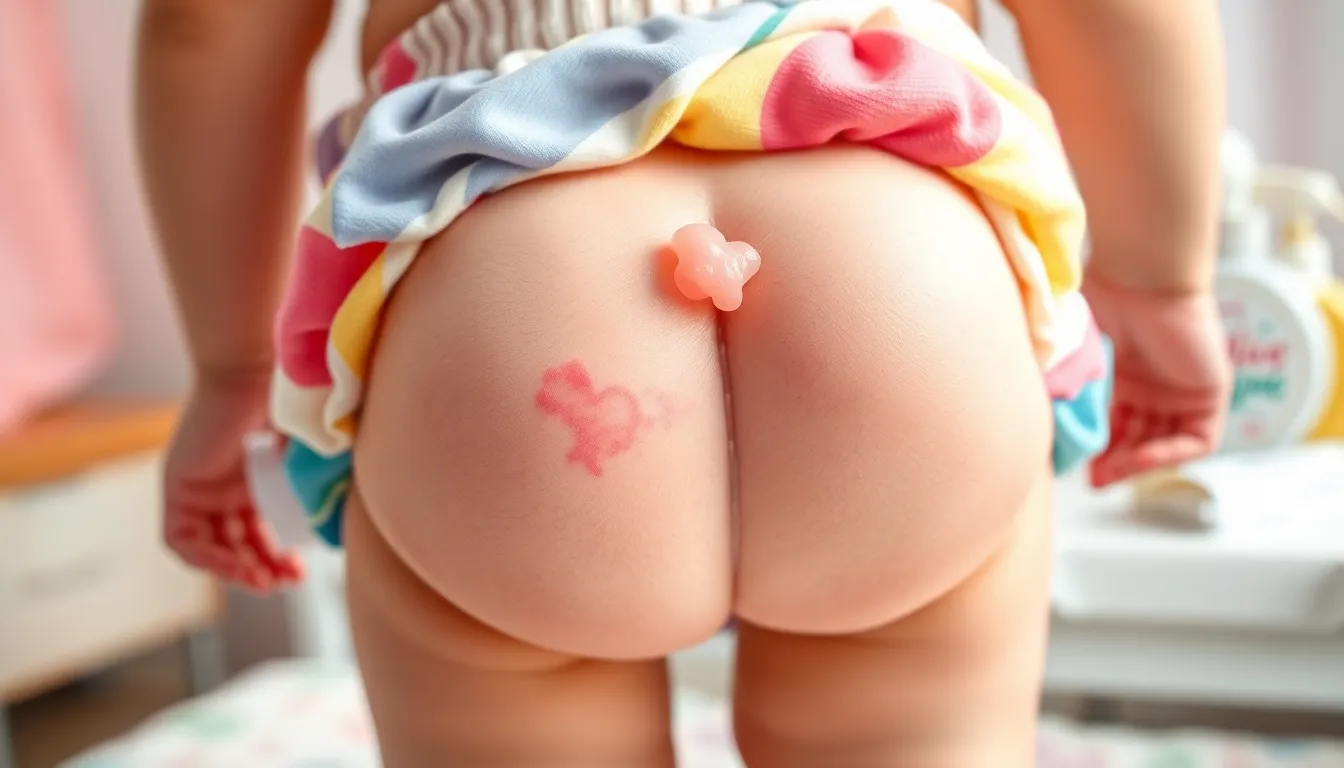
Diaper rash results from various factors that can irritate a baby’s delicate skin. Understanding these causes helps in preventing and managing diaper rash effectively.
Skin Irritation
Skin irritation often occurs due to prolonged exposure to moisture from urine and feces. Diapers that trap heat and moisture create an ideal environment for rashes. Friction from the diaper rubbing against the skin also contributes to irritation. Using highly absorbent diapers and changing them frequently minimizes moisture exposure.
Allergic Reactions
Allergic reactions to diaper materials or products applied to the skin can lead to diaper rash. These products include wipes, creams, and laundry detergents containing harsh chemicals or fragrances. Identifying the allergen and switching to hypoallergenic products can help alleviate symptoms.
Infections
Infections, particularly fungal and bacterial infections, frequently cause diaper rash. Candida yeast infections thrive in warm, moist areas, leading to red, inflamed patches. Bacterial infections can occur when the skin is compromised by irritation. Keeping the diaper area clean and dry, along with using antifungal creams when necessary, addresses these infections effectively.
Effective Diaper Rash Remedies
Diaper rash can cause discomfort for babies, but several effective remedies are available. These remedies fall into categories like home solutions, over-the-counter treatments, and preventative measures.
Home Remedies
- Coconut Oil: Coconut oil has antibacterial properties and moisturizes the skin. Apply a thin layer to the affected area after cleaning.
- Aloe Vera: Aloe vera soothes irritated skin and provides hydration. Use fresh gel from an aloe plant directly on the rash.
- Oatmeal Baths: Colloidal oatmeal soothes inflamed skin. Add it to a warm bath and let the baby soak for 10-15 minutes.
- Cornstarch: Cornstarch helps absorb moisture and reduce friction. Dust lightly on clean, dry skin to keep it dry.
- Breast Milk: Breast milk contains antibodies that can aid healing. Dab a few drops on the rash for potential soothing benefits.
Over-The-Counter Treatments
- Barrier Creams: Creams containing zinc oxide or petroleum jelly create a protective layer. Apply with every diaper change to prevent and treat rashes.
- Antifungal Creams: For rashes caused by yeast infections, creams containing clotrimazole or miconazole can be effective.
- Hydrocortisone Cream: Low-potency hydrocortisone cream can reduce inflammation and itchiness. Use sparingly and not on broken skin.
- Diaper Rash Creams: Formulations specifically designed for diaper rash often combine multiple ingredients. Look for products with zinc oxide and additional soothing agents.
Preventative Measures
- Frequent Changes: Change diapers promptly after soiling. Keeping the area dry minimizes irritation.
- Gentle Cleansing: Clean the diaper area with mild, fragrance-free wipes or water. Harsh chemicals can exacerbate irritation.
- Air Exposure: Allow the baby to go without a diaper for short periods, enabling the skin to air out and heal.
- Choosing the Right Diapers: Use highly absorbent, breathable diapers. Hypoallergenic options minimize allergic reactions.
- Barrier Application: Apply a protective barrier cream proactively before diapering. This reduces moisture contact with the skin.
By implementing these remedies and preventative strategies, parents can effectively manage diaper rash and improve their baby’s comfort.
When To Consult A Doctor
Monitor diaper rash that doesn’t improve within 3 days. If redness, swelling, or tenderness increases, seek medical advice. Notice any signs of infection, such as pus, blisters, or severe discomfort. If the baby develops a fever above 100.4°F (38°C) alongside the rash, contact a healthcare professional.
Consider professional evaluation if the rash appears in areas not covered by a diaper, as this may indicate an underlying issue. If the baby’s skin shows signs of allergic reaction, such as hives or difficulty breathing, seek immediate medical help. Always consult a doctor for persistent or worsening symptoms to ensure proper diagnosis and treatment.
Diaper rash can be a distressing experience for both babies and parents. By understanding its causes and symptoms, caregivers can take proactive steps to keep their little ones comfortable. Utilizing a combination of natural remedies and over-the-counter treatments can significantly reduce irritation and promote healing.
Incorporating preventative measures into daily routines ensures that diaper rash remains a rare occurrence. Parents should remain vigilant and responsive to any changes in their baby’s skin. When in doubt or if symptoms worsen, seeking professional advice is crucial for ensuring the best care. With the right approach, diaper changes can be a smoother process, leading to happier babies and more relaxed parents.
